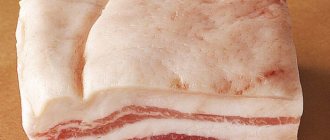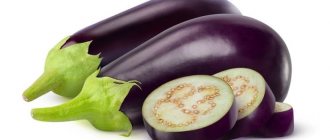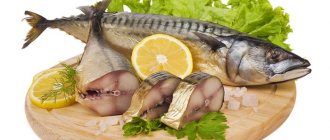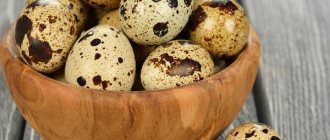Is it possible to use jelly during pregnancy and breastfeeding?
Kissel is considered a drink, but in reality it is a jelly-like dessert. Oatmeal, milk, fruit and berry jelly is sometimes prepared using rye bread, citrus fruits, tea, and even medicinal herbs are added to them. The benefits of jelly directly depend on what is included in its composition.
Oatmeal jelly is the leader in terms of beneficial properties, but almond or milk jelly are considered very high in calories. Fruit jelly is recommended for those who want to lose weight.
Is jelly good for pregnant women and during lactation? Which one? After all, there are many recipes. This is what our article will be about.
Fruit jelly contains the least calories
Is jelly possible for a nursing mother and during pregnancy?
Most women, having learned about their pregnancy, worry about the harm of the products they consume, and begin to focus on their every inhalation and exhalation. Any dish or drink is subject to doubt. Let's try to dispel misconceptions regarding the dangers of such a useful product as jelly for a pregnant woman.
Kissel has some contraindications due to the presence of starch (potato or corn) in it. It also contains pectin, which is so beneficial for pregnant women. After all, when it is present in the body, toxic substances and excess cholesterol are eliminated faster, and the absorption of pesticides, radionuclides, and heavy metals is prevented.
By eating jelly, it is as if we are starting the process of cleaning the body from the inside with soft brushes: all the toxic elements that are formed in the intestines, heavy metals, and by-products are adsorbed and removed from the body.
When we drink jelly, all toxins are removed from the body
Will jelly harm the fetus during pregnancy? Doctors allow pregnant women to drink the jelly-like dessert at all stages, but there are some warnings:
- Drink in moderation. You shouldn’t lean on a thick, sweet drink, despite all its benefits: it’s better to drink a little and rarely. This warning is explained by the presence of starch in jelly, which leads to constipation. Pregnant women even without jelly have problems with stool.
- But if constipation in a pregnant woman is a frequent occurrence, then she should give preference to fruit drinks, natural juices, fermented milk drinks, and tea.
- You should not eat jelly if the pregnant woman has a large fetus. Kissel will only aggravate the situation: both mother and baby will quickly gain more weight than normal. Often women who gave birth to a large baby noted their love for jelly.
- Berries and fruits from which jelly is made can cause an allergic reaction in a pregnant woman. If the mother is prone to allergies, the baby may also suffer from the effect of certain fruits and vegetables as irritants on his little body.
Berries and fruits for jelly must be fresh and without traces of rot.
In addition to the potential harm to a pregnant woman, the pleasant-tasting jelly also has benefits for the body of a woman and her child: it easily copes with heartburn, which begins to haunt expectant mothers in their final stages.
How is it recommended for a pregnant woman to take jelly so that it benefits both: the expectant mother and the fetus?
- During pregnancy, avoid store-bought jelly from packs and bags. Drink dessert only home-cooked from real ingredients.
- In a jelly-like dessert that is cooked for a pregnant woman, nothing should be used except berries, fruits, sugar and starch.
- Start making jelly only if you are not allergic to specific fruits or vegetables.
- If you decide to drink jelly to get rid of heartburn, then one glass will be enough.
Gooseberry jelly
Kissel for a nursing mother
- The nutrition of a nursing woman is displayed on the newborn. Before using a new product during lactation, it is worth finding out how it is useful.
- Starch, which is added when cooking jelly, is very nutritious. But this is not the only positive property of jelly.
- Starch prevents the occurrence of ulcers and inflammation. It is recommended for those suffering from gastritis and various gastrointestinal diseases, as it reduces the concentration of acid in gastric juice.
- A nursing woman who drinks jelly feels not only full, but also a surge of strength and energy.
- It is safer for a nursing woman to consume jelly made from milk or oatmeal. They do not contain allergens found in berries, vegetables and fruits.
Nursing mothers are advised to drink jelly from milk or oatmeal
What recommendations exist regarding the use of jelly by nursing mothers?
- If the mother or baby has allergic rashes, you can start using jelly only 5 months after birth.
- If a woman suffers from constipation, then jelly is contraindicated, because it has fixing properties.
- It is better to consume jelly in the morning.
- If a woman has not consumed jelly before, then during breastfeeding it is better to start with a few sips of milk jelly. Next you should monitor the baby’s reaction.
- If the baby does not have bloating or constipation, and does not show anxiety, then the next morning you can drink half a cup of jelly. In the future, you can drink a cup of sweet dessert a day.
- The same recommendations regarding the use of oatmeal jelly.
If your baby is not bloated after eating jelly and feels well, then you can introduce jelly into the menu
Kissel during pregnancy and breastfeeding: benefits
Jelly recipes and ingredients add different properties to the finished product and each is useful in its own way.
How are various jelly products useful during pregnancy and lactation?
- For functional diseases of the gastrointestinal tract, it is better to drink oatmeal jelly. It restores liver function and removes harmful substances from the body.
- Eating rye jelly has a beneficial effect on the condition of the skin, and this is so important in the postpartum period.
- Cranberry jelly helps the body cope with colds and flu, saturating the body with vitamin C. Berry and citrus jelly have the same properties. But a young mother should remember that the components of such jelly can cause allergies in the baby.
- If a pregnant or nursing mother has anemia (lack of iron), then apple jelly is indicated for her. In addition to iron, apple jelly contains a lot of vitamin C, which is why it perfectly stimulates the immune system. Eating apple jelly also promotes weight loss.
- Blueberry jelly helps to cope with infectious diseases and stomach problems, which also improves vision
- It is recommended to drink cherry jelly for respiratory diseases.
- If during lactation or pregnancy a woman has problems with the liver or gall bladder, then she should prepare rowan jelly (it has diuretic properties)
- If a woman feels tired and lacks strength, then she is recommended to use honey jelly, which has an immunostimulating effect.
- Milk jelly promotes the growth of the child, and also normalizes the microflora of his intestines.
Milk jelly is good for baby
How to properly use jelly during pregnancy and breastfeeding
- Regardless of the ingredients, jelly has an enveloping property, therefore it is useful for gastritis and ulcers.
- The starch content adds calories. Before consuming jelly, you need to make sure that neither the young mother nor the baby is allergic to the products from which it is made.
- The use of jelly from powders intended for instant preparation is strictly prohibited!
- You can drink jelly without fear after the first month after giving birth. However, too much dessert can cause constipation in a newborn.
- Only after introducing into the diet each individual component that is used when cooking jelly, can you begin to consume the jelly-like dessert itself.
- To begin with, it is recommended to use jelly from one ingredient, and only if there are no negative reactions in the baby, switch to multi-ingredient jelly recipes.
It is better to cook jelly with corn starch
It is better to cook jelly using corn starch. Potatoes can cause heartburn.
Rules for using jelly during lactation
- Berry and fruit jelly can be added to the menu a month after the birth of the baby. Oatmeal jelly is turned on after 2-3 months, milk jelly after six months;
- You can try dessert only after each component from the recipe has been introduced into your diet;
- For the first time, try a few sips and watch the baby's reaction. If no allergies or other negative reactions are detected within two days, the dessert can be consumed without risk to lactation and the child;
- Cook oatmeal jelly in water, not milk! Milk not only increases the risk of allergies due to the cow's protein content, but also increases the calorie content of an already high-calorie dessert;
- At first, drink jelly from only one ingredient, then you can gradually add new ones and prepare multi-ingredient desserts;
- When preparing, use only fresh fruits, vegetables and berries. The fruits must be free of rot, dents and black spots. Sort the berries carefully, rinse the products in running water;
- If you use starch, use corn starch. Potatoes can cause heartburn;
- Try to prepare thinner jelly, as it is easier to digest and has a better effect on lactation than thick jelly;
- It is better to drink jelly warm. This way it will bring more benefits;
- If you use nuts or dried fruits in cooking, first chop the ingredients and soak in cold water for 15-30 minutes;
- Never use powdered jelly! Such powders contain flavors, dyes and other chemicals, which can lead to severe poisoning;
- The recommended daily intake for breastfeeding is 1 glass of jelly.
Can cranberry jelly be made from currants for a nursing mother?
- After childbirth, a woman’s body experiences a severe deficiency of vitamins. Cranberries make an excellent multivitamin.
- Eating berries helps improve the functioning of the gastrointestinal tract, enhances intestinal motility, and improves the process of food digestion. But besides this, the introduction of cranberries into the diet of a nursing mother has a positive effect on the condition of nails, skin and hair.
- Cranberry or currant jelly perfectly helps the body cope with a cold that has overcome it. This jelly is also effective against depression, and it also lifts your spirits.
- You can drink cranberry or currant jelly prepared at home during lactation if the baby and the nursing mother are not allergic to these berries.
You need to cook jelly for a nursing mother in water, not milk.
- To prepare it, take fresh berries that do not have rotten spots, damage or black spots. The berries need to be sorted and washed in running water.
- Gynecologists advise nursing mothers to drink cranberries for better recovery during the postpartum period, as well as for wound healing and tissue renewal. Immune protection increases when consuming berries, and the entire body is strengthened.
- Doctors assure: cranberries are a hypoallergenic berry. Once in the body, it is able to remove the allergens present inside. In case of allergic manifestations, you can start drinking cranberry or currant jelly only after five months.
Cranberry jelly is considered a low-calorie product
Can a nursing mother eat oatmeal jelly during pregnancy?
- Oatmeal jelly for a nursing mother and during pregnancy is a valuable and healthy type of dessert. Oatmeal jelly contains many useful vitamins and microelements that are necessary for the expectant mother and her baby.
- It is rich in protein and organic acids. However, it is worth remembering that starch is not used in its preparation. Oats themselves have thickening properties.
- Eating oatmeal jelly will give pregnant women and young mothers vigor and replenish the lack of energy. It is recommended to drink jelly to normalize heart function and improve digestion.
- Oatmeal jelly quickly saturates the body and a woman does not risk gaining extra pounds. When consumed, the increased acidity of the stomach is reduced and clinical signs of dysbiosis are stopped.
- Oatmeal jelly for pregnant women and breastfeeding should be cooked in water. When using milk as one of the ingredients of jelly, there is a possibility of an allergic reaction.
Oatmeal jelly is nutritious and very healthy
Types of jelly
Today there are several types of jelly. The healthiest are oatmeal, the hearty are milk and almond, and the light are fruit and berry. A nursing mother is not recommended to drink milk and almond jelly, since both milk and almonds are quite allergenic products. And oatmeal and fruit and berry dessert will be a healthy dish and will diversify the menu during breastfeeding.
Oatmeal jelly is the most valuable and healthy type of dessert that a nursing mother can and should drink. When preparing such a dish with water, you will not need starch, since oats are an excellent thickener. It will provide vivacity and energize you for the whole day. This is an excellent remedy for maintaining immunity, normal heart function and digestion.
Natural oatmeal quickly saturates the body and does not contribute to excess weight. In addition, oatmeal jelly will have a beneficial effect on the health and condition of hair, which is very important for a nursing mother. After all, after childbirth, many women face the problem of hair loss. If you drink jelly once a week, the dry scalp will go away, and your hair will become healthy and shiny.
Berry and fruit jelly is a light dessert that effectively protects against colds and depression. In addition, it will help if you are already sick. However, a nursing mother should carefully select ingredients. Thus, many citrus fruits, such as orange, often cause an allergic reaction in infants.
Apple jelly is perfect for a nursing mother, because apples are considered one of the safest fruits for breastfeeding. It will prevent anemia, help with hypovitaminosis and improve digestion. In addition, apples promote weight loss, so such fruits are often included in the diet menu. Among the fruits, you can also choose bananas and pears; if you are not allergic, you can choose a slice of lemon or nuts. You can use vegetables and dried fruits in cooking.
Among the berries, choose blueberries and cranberries. Blueberry or cranberry dessert will help with ARVI and flu. It improves and maintains visual acuity, improves digestion and improves mood. Currants, cherries, plums are good for a nursing mother, and raspberries if there is no allergy. Read the link to see what other fruits and berries you can eat while breastfeeding.
Kissel for a nursing mother in the first month: recipe
A nursing mother can begin to introduce traditional berry jelly into her diet only after the baby is 6 months old.
During the first month after giving birth, a nursing mother can diversify her menu with milk and oatmeal jelly. The method of preparation and ingredients of jelly for a nursing mother are no different from the classic ones, and you can drink it several times a day.
Oatmeal jelly recipe - monastery
Kissel is still prepared according to this recipe in monasteries today. The only ingredients you need to prepare are oatmeal (coarsely ground).
Preparation
- Steam the oatmeal with boiled, slightly cooled water. After it has been infused for a day, the oatmeal must be squeezed out and put on low heat.
- Add a little salt. Stirring constantly, cook until the mixture thickens. After this, remove from the heat and pour into glasses or bowls in which the jelly will be served to the table.
- When the jelly has cooled, put it in the refrigerator until it hardens.
The finished jelly is poured into glasses
Jelly recipes for nursing
Apple-carrot jelly
- Apples without peel - 4 pieces;
- Peeled carrots – 1 piece;
- Sugar – ¾ cup;
- Starch – 1.5 tbsp. spoons;
- Boiled water – 2 glasses.
Cut the apples into thin slices and grate the carrots. Cover the vegetables with sugar and leave for 20 minutes. Then add water to the mixture and place on low heat for 40 minutes. Then strain the mixture and put the drained liquid back on the fire. Dissolve the starch in cold water and slowly pour into the jelly, stirring constantly. After adding the starch, remove the dessert from the heat. To prevent a crust from forming, you can pour in ⅓ cup of cold water.
Berry jelly
- Any berries (cranberries, currants, raspberries, blueberries, etc.) – 1 cup;
- Boiled water – 2.5 cups;
- Starch – 1.5 tbsp. spoons;
- Sugar – ¾ cup.
Pour half a glass of water over the berries and wipe. Set aside the resulting juice for a while, and pour the berry juice with two glasses of water, boil for 5 minutes and strain. Add sugar to the strained broth, stir and put the mixture on the fire. Dilute the starch with three to four tablespoons of cold water and gradually add to the mixture, stirring. Let it almost boil, but do not bring it to a boil. Quickly remove the jelly from the heat and pour in the reserved juice, stir the mixture.
Cranberry jelly with dried apricots
- Cranberries – 300 gr;
- Dried apricots – 300 gr;
- Boiling water – 2.5 cups;
- Sugar – 5 tbsp. spoon;
- Starch – 1.5 tbsp. spoons.
Pour half a glass of boiling water over the cranberries, crush and strain. Leave the strained juice, pour the remaining boiling water over the berry pomace, strain and put on fire. Wash the dried apricots, cut them and add to the broth. Bring the mixture to a boil. Dilute the starch with cold water and slowly pour into the pan, add sugar and mix well. Pour the reserved juice into the prepared jelly.
Oatmeal jelly on water
- Rolled oats and oatmeal – 1 cup;
- Warm boiled water – 1.5 cups;
- Butter – 50 g;
- Sugar and salt to taste.
Pour water over the cereal, cover with a lid and leave for 12 hours. Strain the jelly, and put the drained liquid on the fire and cook until thickened. At the same time, do not forget to stir the mixture regularly. Add a piece of butter and salt to the thick mixture and refrigerate until cool. You can add a little sugar and nuts to the finished dessert. Read here what nuts a nursing mother can eat.
Banana jelly
- Large banana - 1 piece;
- Boiling water – 1 glass;
- Sugar – 1 tbsp. spoon.
Peel the banana and mash it to a puree consistency, add sugar, pour boiling water and stir. Cover the mixture with a lid and leave for half an hour. Strain the jelly and heat it up.
Kissel will be an excellent dessert while breastfeeding.
It will add mood and positivity, help avoid stress and colds, relieve tension and warm you up in cold weather. The beneficial composition saturates the body with vitamins and energy. This is an effective remedy in the fight against viruses and various diseases. Subscribe to our VKontakte group











